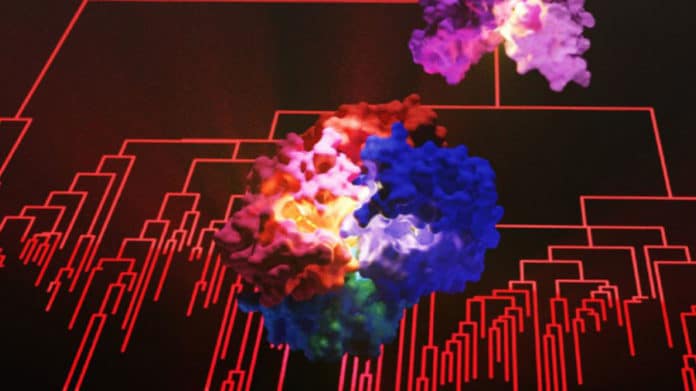A new study has identified the evolutionary “missing link” through which hemoglobin evolved from simple precursors. They found that the rise of modern hemoglobin’s structure and function was activated by just two mutations more than 400 million years ago.
The study was conducted by scientists from the University of Oxford, the University of Chicago, Texas A&M University, and the University of Nebraska-Lincoln.
Using statistical and biochemical methods, scientists reconstructed and characterized ancient proteins before, during, and after the earliest forms of hemoglobin were evolving. By doing this, they were able to detect the missing link during hemoglobin evolution – a two-part complex that existed before the last common ancestor of humans and sharks.
This ancient complex didn’t yet possess any of the fundamental properties that allow modern hemoglobin to convey oxygen from the lungs to the brain, muscles, and different tissues.
University of Oxford Professor Justin Benesch and DPhil student Shane Chandler from the Department of Chemistry said, “The key question was to determine through which interfaces the ancient proteins assembled. The part of the puzzle that needed to be solved was how hemoglobin attained its four-subunit structure. This required us to develop new methods for detecting protein-protein interfaces and revealed the historical order of assembly of this remarkable molecule.”
“The traditional view of how biological complexity evolves is that it increases gradually throughout many mutations that each causes small improvements in fitness. The new research shows that complicated new structures can come into being very quickly.”
University of Chicago Professor, Joseph Thornton, who led the study, said: “We were blown away when we saw that such a simple mechanism could confer such complex properties. This suggests that jumps in complexity can happen suddenly and even by chance during evolution, producing new molecular entities that eventually become essential to our biology.”
Journal Reference:
- Arvind S. Pillai et al., Origin of complexity in hemoglobin evolution. DOI: 10.1038/s41586-020-2292-y
